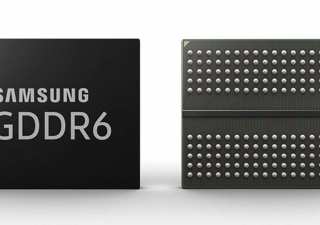
HW & SW Systems

GDDR6 Memory is Here: Samsung’s New-Generation Graphics Memory is in Mass Production
Up until now, the best memory standard you might have gotten for your graphics’ performance would have been DDR5. This is the highest value of double-data rate (DDR) type chips available to enhance video, multimedia or gaming, available on the highest end of devices.

Happy International Data Protection Day!
The security of personal or important information from those who would exploit it for their own gain is an increasingly pressing concern for modern-day society.
It is hard to stay completely anonymous for personal privacy on the internet these days. The browsers and programmes we all use every day may leak data that could identify or locate us; on the other hand, there are tools and strategies out there that can help seal these minor breaches.
CES 2018: LG Unveils a New Dimension in Flexible Screen Tech
A few years ago, LG showcased their new direction in OLED technology: a truly foldable (or rather rollable) display that could be manipulated consistently without losing picture quality or function. Now that it’s 2018, the company has decided to debut what may be the results of considerable development on this concept.
New Sequencing Technique Improves Accuracy in Human DNA Analysis
Conventional DNA sequencing is getting more powerful and time-effective. However, it is still based on amplification, which involves using a DNA polymerase such as Taq to produce numerous copies of the sequence to be analysed. The problem with amplification is that it can increase the risk of false-positive results in terms of pertinent mutations.
Writing Music with the Mind: New BCI Modality Offers the Power to Make Music as well as Play It
Brain-computer interfaces (BCIs) that allow people with severe neuromotor or motor disorders to communicate are becoming more and more common. This is realised by scanning brainwaves using electroencephalography (EEG) and converting them accurately into words, letters or other objects that the user intends to replicate in their minds. BCIs are beneficial for those with extensive paralysis, ‘locked-in’ syndrome and other similar conditions.
Lithium Batteries Live Another Day: New Graphene-Ball Technology May Extend Conventional Phone Battery Life
Lithium-ion batteries are probably the most popular and common type of battery for portable devices such as smartphones and tablets. One major disadvantage though, is that their lifespan and performance has appeared to hit a ceiling as of late, which leaves many electronics companies facing complaints of reduced battery endurance.
Flexible, Disposable Paper Sensors to Boost Medicine in Disadvantaged Areas
The testing and analysis procedures involved in modern-day medical diagnostics is slowly moving away from what many may see as the archetypal ‘lab-based’ setting, thanks to advanced biotechnology and technology. Medical science is slowly becoming less dependent on using fiddly glass equipment and complicated protocols, and instead turning to state-of-the-art sample collectors, sensors and corresponding electronic machines that analyse the biological data they collect.
AI Goes Open-Source: SingularityNet Aims to Decentralise Deep Learning
Artificial intelligence (AI) is an increasingly powerful commercial tool. It is used more and more by financial services, the insurance industry and of course the information technology multinationals. There are also indications of its emerging role in healthcare, an economical concern worth over one trillion dollars today.
Emergency Medicine Researchers ‘Upgrade’ an Ultrasound Machine - For $10
Two-dimensional (2D) ultrasound is a straightforward and relatively cheap form of medical imaging. In skilled and experienced hands, it can be a powerful tool for visualising organs and what may be wrong with them. However, it is often regulated to use in emergency medical situations in hospital settings. Its other main use is to generate foetal imaging for obstetrics and related practices.
XFEL is Online: Free Electron Laser in the World is Open for Business!
For twenty years, DESY (the German synchrotron administration) has been working on a bigger and better X-ray laser. Such an implementation would enhance the imaging and analysis of subjects from a wide range of scientific research topics, from viruses to exo-planets. The new laser, known as European XFEL, is based at the DESY research center in Hamburg, but extends nearly four kilometers along the ground until it reaches a campus in the Schleswig-Holstein town of Schenefeld.
VR Moves into Everyday Life: Microsoft Mixed Reality is Here
Many of us already enjoy VR for gaming and recreational activities. However, Microsoft would also be happy if you expanded that use to interfacing with your computer desktop, connecting with colleagues far away in the same virtual space, and… yet more immersive gaming. They have partnered with Samsung to deliver a new generation of computing in hybrid real-life/virtual spaces. They call it Mixed Reality, and have premiered it in an event earlier this month.
Your Plastic Co-Pilot Who’s Fun to Fly With? - A Robotic Arm that Can Help Pilots on Aircrafts
Would you board a plane knowing that one of the flight crew wasn’t human? This may be a valid concern for those working in the Defense Advanced Research Projects Agency’s (DARPA) ALIAS program. ALIAS, in this case, stands for Aircrew Labor In-Cockpit Automation System – a robot designed to take part in the control of a plane along human pilots.
Pages




